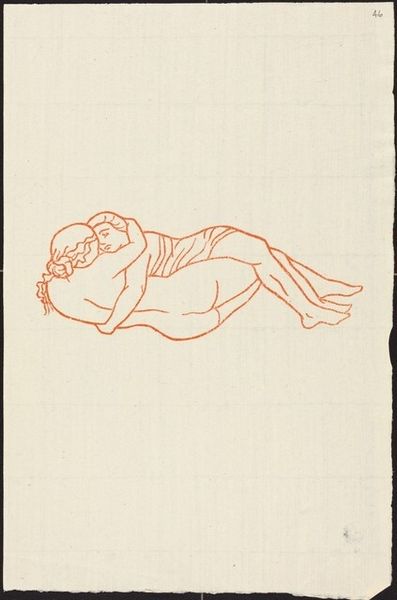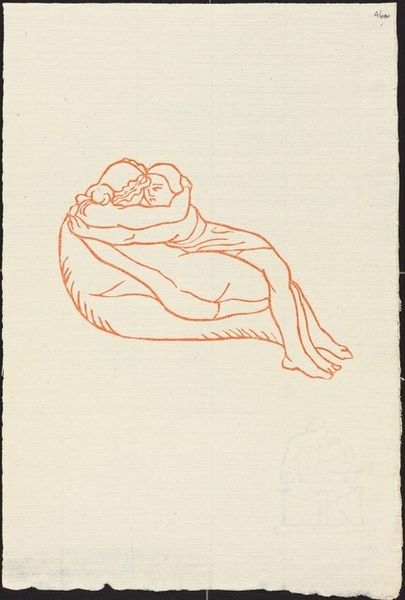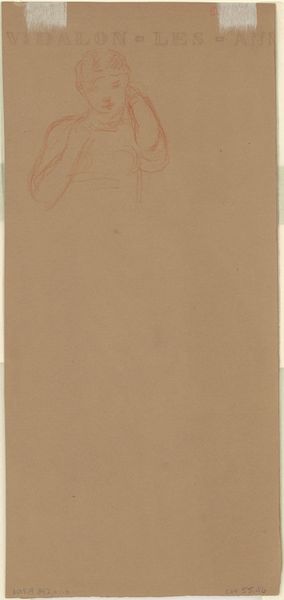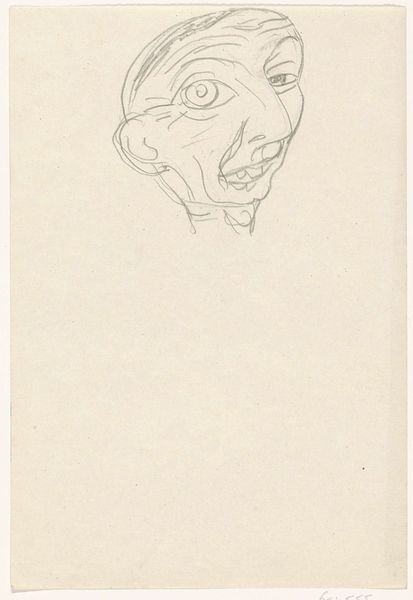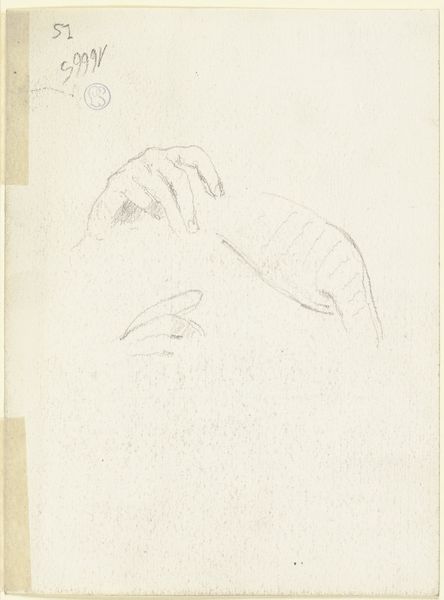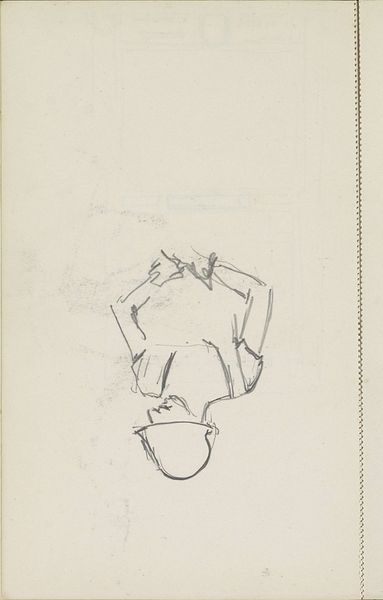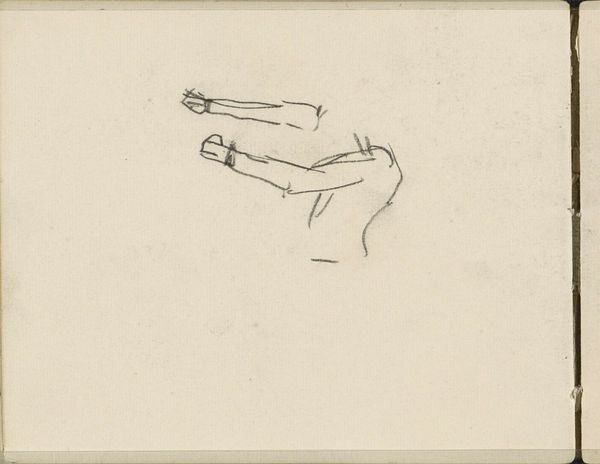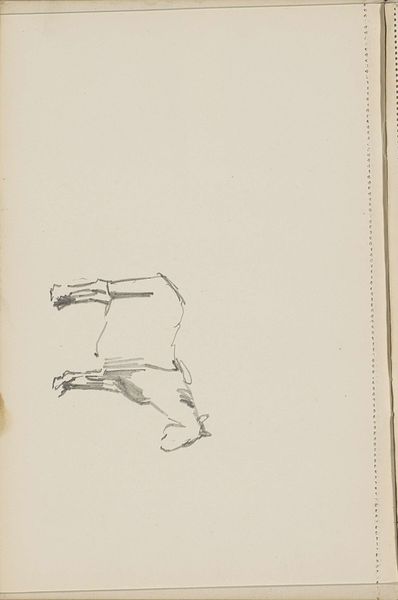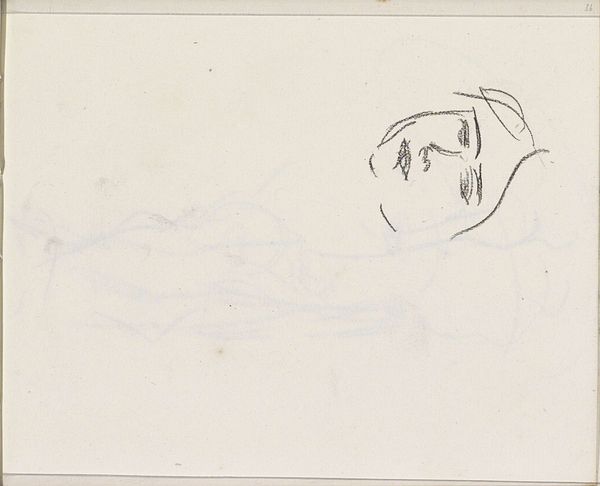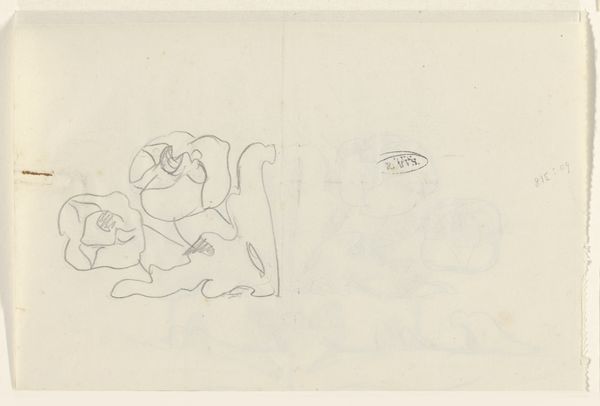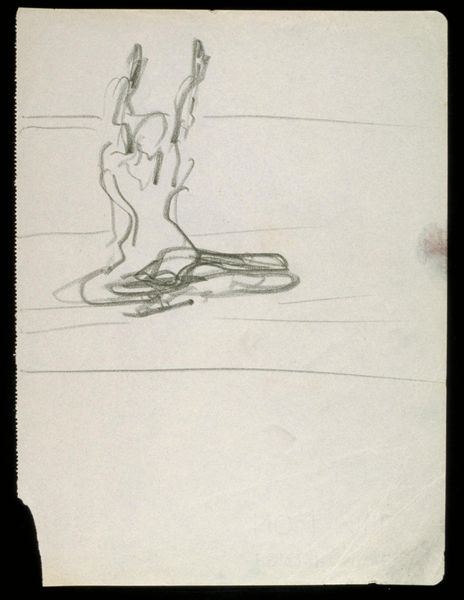
Second Book: Three Goats Resting, Fourth Plate (Trois chevreaux couches, quatrieme planche) Possibly 1937
0:00
0:00
drawing, print, ink
#
drawing
#
ink drawing
# print
#
landscape
#
figuration
#
ink
Copyright: National Gallery of Art: CC0 1.0
Curator: Here we have Aristide Maillol's "Second Book: Three Goats Resting, Fourth Plate," a print made possibly in 1937, utilizing ink. Editor: My first thought is how utterly simple, yet charming, it is. Just a few lines and you have these very relaxed, almost sleepy-looking goats. Curator: Maillol was deeply engaged in the idea of classical form, reducing figures to their essential shapes. You see that economy of line beautifully exemplified here. Editor: Exactly! Look at the way the material is employed. The negative space surrounding the goats is almost as important as the ink itself; it emphasizes the pure, unadulterated quality of the linen paper. The trace of the ink on the page lends itself to the rustic qualities of the scene depicted. Curator: The interesting part is to consider these images within the context of book illustration at the time. These goats weren't necessarily intended as stand-alone works, but as part of a larger narrative. The simplicity works on two levels: it gives them a timeless quality, harkening back to pastoral imagery throughout history, and makes for ease of production. Editor: That makes perfect sense! Thinking about Maillol's process, the labor of love embedded within each print… were these mass produced? What does this accessibility do for our understanding of Maillol's status as a prominent sculptor? It forces a reframing of the labor behind it and raises all sorts of social questions around production. Curator: Well, these prints did contribute to a broader understanding and appreciation for Maillol's artistic range. The political dimension of his works at that time reflected the need for a calming return to nature. Editor: I agree. And, thinking about materiality again, the tactile nature of printmaking as opposed to sculpture… It allowed him to reach different audiences with differing expectations. Curator: Yes, this single plate manages to encapsulate themes of simplicity and a connection to nature, crucial motifs in the broader scope of Maillol's work. Editor: Precisely. Examining "Three Goats Resting" is a beautiful reminder to slow down and consider the subtle power of materiality. Curator: Indeed. And for me, to reflect on how something so simple carries resonances far beyond its size and original context.
Comments
No comments
Be the first to comment and join the conversation on the ultimate creative platform.
